-
Posts
2,406 -
Joined
-
Last visited
Content Type
Profiles
Forums
Gallery
Events
Articles
Posts posted by Ian
-
-
another few `jetons de presence'
The first was issued for the french assurer `L'Auxiliaire' which covered risk of accidents in the construction industry
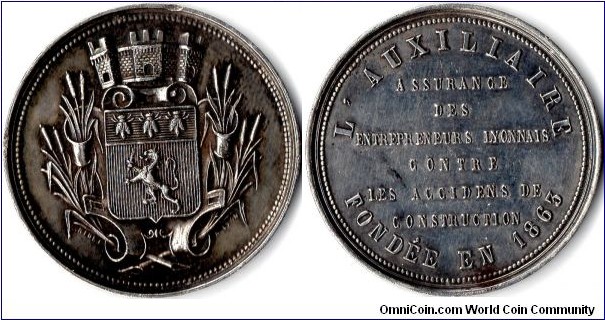
The second is one of a number of different types of jeton issued by `La France' covering fire risks
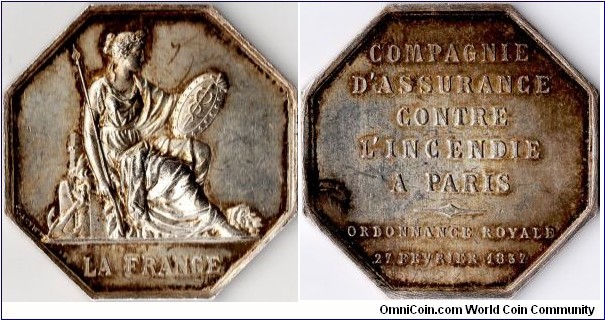
The third was an unusual find. Its a rare example of a silver piedfort jeton struck for the Swiss assurance company `La Genevoise' in 1984. Very reminiscent of the quality and depth of strike you see in the swiss shooting medals of that decade. The jeton was engraved by George Hantz and struck in Geneva.
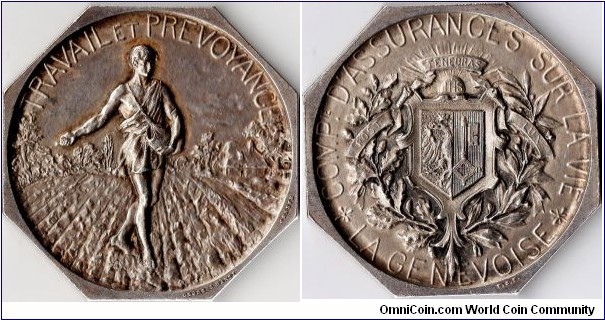
-
Having a close look at the actual mark on the edge is the best way forward....

-
Hi,and a happy New Year to you.
Your one is clearly the `main indicatrice' edge mark. No arguements there....and indeed quite likely to match that of the original.
The image on the original is not particularly clear and i've seen so many `corne d'abondance' marks that look so similar to it that it registered with me as that mark.
Here's a close up of a strong example of the cornucopia `poincon'
http://fr.wikipedia.org/wiki/Fichier:Diff%C3%A9rent_numismatique_corne_abondance.jpg
-
Hi.....perhaps my eyesight is failing, but to me that definitely looks like the typical cornucopia mint mark.
-
Nice medal, but i have no expertise in relation to that particular subject matter.
As a beginner collector of Napoleonic medals / exonumia you would benefit from a visit to this site to gain insight as to the `scope' involved:
http://www.napoleonicmedals.org
In terms of what /where to buy...the golden rule in collecting coins /medals /jetons is `buy the book before you buy the coin'. Knowledge is king and the more you research your chosen subject area, the better prepared you will be to spot a bargain when the opportunity presents. \other than that...keep your eyes peeled on ebay and try searching using various different relevant words within coins/ medals.
happy hunting!
-
Thanks for reply. To my mind it was minted no later then 1880 because between 1845-80 bronze medals were stamped "CUIVRE". In any way what will be optimal cost for such items? Is it historical material or only souvenirs ?
It is a re-strike of the original, minted by the Paris mint for collectors. There are a couple of corrosion spots (verdigris marks) on the reverse and a fingerprint on both obverse and reverse otherwise it is in collectable condition. I've seen these re-strikes sell for anything from 20 - 60 euro...However, you might be lucky and get more but given the presence of verdigris, I wouldn't hold my breath.
-
Hi
from the edge mark (cornucopia) it was minted AFTER 1880.
-
Hi,
The `graininess' is in part due to the low definition scan and in part due to the fact that it is a good few years old. It has certainly seen a high element of circulation for a jeton, including having a mount added (and removed) at some stage.
I'll take a photograph (as best i can) and post tomorrow.
Here's links to a couple more images. the first is a close up which shows some doubling to the horse's rear.
http://www.coinpeople.com/index.php/gallery/image/3532-orangeobv3
http://www.coinpeople.com/index.php/gallery/image/3531-orangeobv2
-
I have a few medals/ tokens/ coins by `Roty'
there are earlier threads which `billybaggio' might find of some interest (or not as the case may be), this being one of them:
http://www.coinpeople.com/index.php/topic/25806-louis-oscar-roty/?hl=roty
-
Nice

In 1598 Mendoza with a large force laid siege to a number of neutral cities bordering the Republic & when they fell his troops committed many atrocities, including the murder of Wirich VI, Count of Daun zu Falkenstein (Ulrich VI von Daun-Falkenstein).
Maurice commanded a force only a quarter the size of Mendoza's but by using the rivers as barriers(when they were not frozen) and skillful maneuvering his troops, skirmishing, occupying strong-points, and seizing supplies etc he frustrated The Spanish advance into the Republic's territory, without engaging in any major combat, thereby gaining valuable time.
The Latin on the jeton translates as: Obv. Under his wings(this could have a deliberate double meaning) you are protected by a bronze shield, Rev. An avenging god pursues the proud.
Thanks for the info and the translation of the legends. Much appreciated.
The imagery and language provides a fascinating portrayal of the politics and history of the time.
-
Hi,
The `graininess' is in part due to the low definition scan and in part due to the fact that it is a good few years old. It has certainly seen a high element of circulation for a jeton, including having a mount added (and removed) at some stage.
I'll take a photograph (as best i can) and post tomorrow.
-
Political jetons struck for the Spanish Netherlands are generally hard to find and usually relatively expensive when you do find them. Not having deep pockets i have shied away from developing any keen interest in collecting these pieces and its not an area i can claim to have any profound knowledge or expertise in.
That being said, this jeton was sold to me as being `copper' but on closer examination it is evidently silver or an alloy with a very high silver content. Mitchiner cites it as being issued in 1597 /8
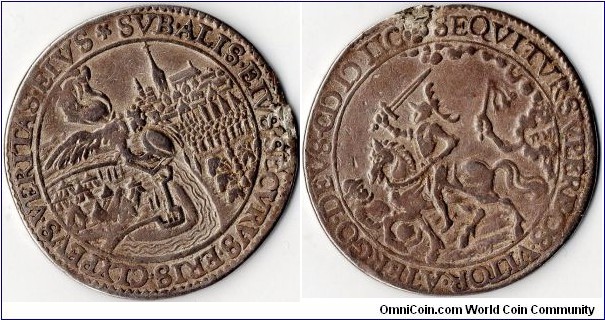
reverse: the encamped Dutch army under Maurice of Orange being shielded by the Angel of God while the Spanish Army under Mendoza is massed the other side of the river at Dordrecht
obverse: Mendoza riding forward while being flailed by the arm of God.
-
recent acquisitions
silver jeton issued for `La Mer' a maritime insurer.
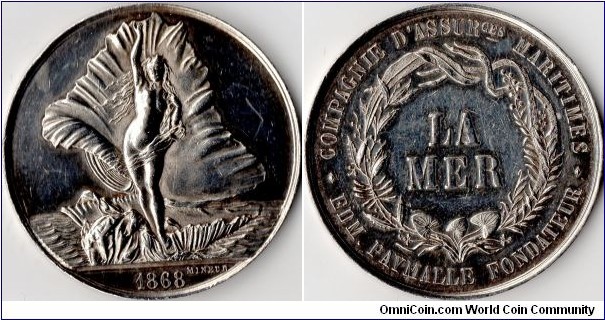
silver jeton issued for the `Courtiers de Commerce de Marseille' a maritime assurer
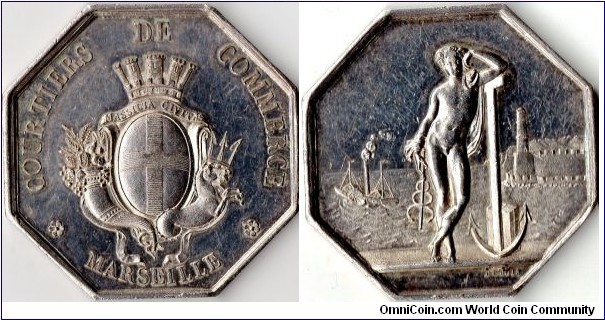
-
Here's a jeton struck for the office bearers of Marseille Chamber of Commerce the same year (1775)
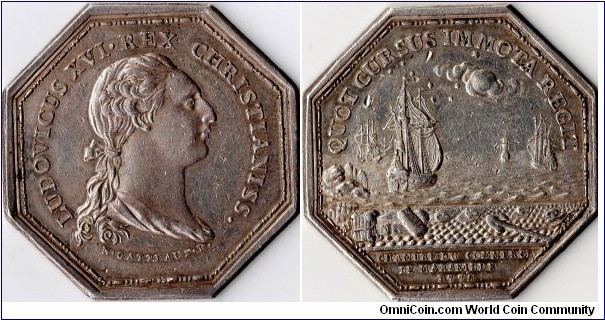
-
Is that an amphora to the lower right of the seated figure?
yes. i've no data on the composition of the scene involved but the amphora probably depicts olive oil or some other form of `edible' oil.
-
This one was struck in 1756 for both the Charity Commissioners and the Church Wardens
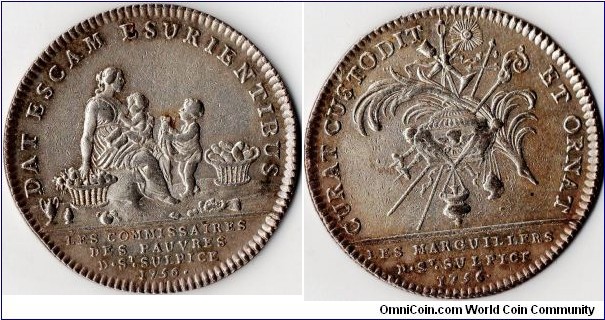
-
Just acquired my second example of this jeton, Unfortunately, it is not an example of the one with the obverse legend variation but the obverse on this seems to have been struck using a different die from the first example
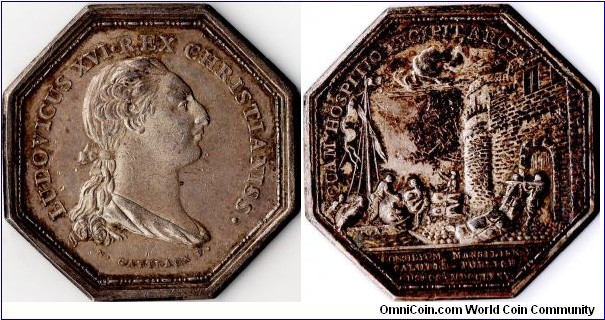
-
great sleuthing as always!

A wiseman once told me that the best investment you can make is in your own knowledge, and for you that investment has paid off.
Nice medal, nice story, and once again...well done that man!
Ian
-
Another bank jeton from revolutionary France, this time struck for the Caisse D'Escompte de Commerce in An 6 (1797/8)
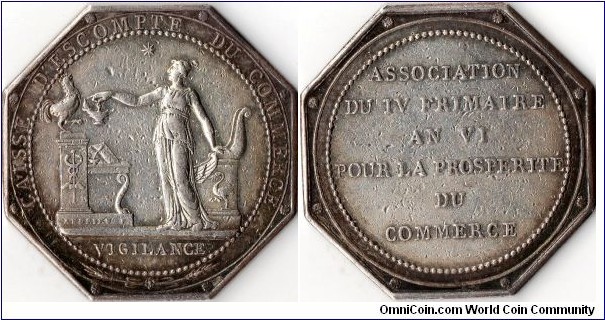
-
A lucky purchase on ebay. Seller bundled three jetons together, two of which were fairly common. The third....this one...falls into the scarce as hen's teeth category. Either nobody bothered to look closer at the individual jetons or the world was fast asleep.. Either way i'm a happy bunnie.
The jeton was issued in 1875/6 on the inauguration of the company (L'Assurance Financiere) and went bust in 1896....with little happening of note in between, except business was not good,
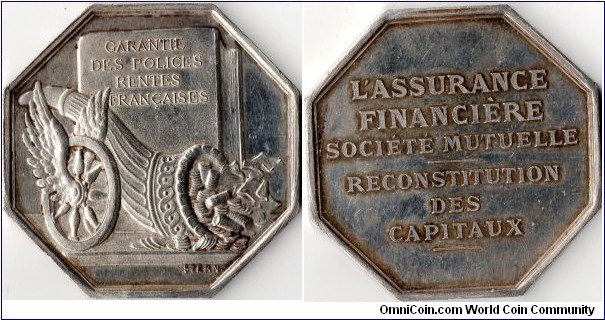
-
This silver jeton was struck in 1867 for the `Societe de Garantie Mutuelle Contre Le Piquage D'Onces', If my understanding is correct, the origins of this `Mutual' lies in the silk industry at Lyon where the society was set up to counter the pilfering of silk. `Piquage D'onces' roughly translates as `pickings in ounces. That is, theft in small amounts to escape detection However, the small amounts all added up to quantities sufficient to warrant action by the various merchants and manufacturers of silk goods.
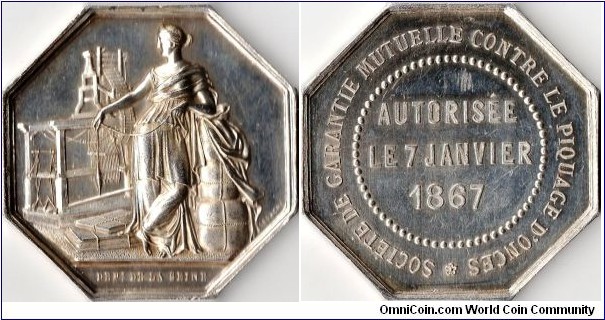
-
A silver jeton issued in 1713 during the reign of Louis XIV for the Charity Commissioners of the Church and parish of St Sulpice, Paris.
Obverse shows (presumably) one of the Commissioners doling out charity to the needy in the parish
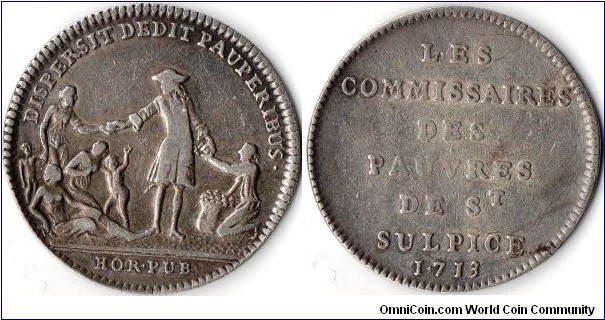
-
Paddle steamboat trip on the Rhone.........what a lovely thought!
Thanks for the data link
I grew up in Dundee where, before the Tay Bridge was opened (1966) a popular day out commenced with taking the local ferry (aka`The Fifie') from Dundee over to Newport in Fife. The journey time depended upon weather and tides and took between 10 and 20 minutes to make the crossing. The cost was the princely sum of one (old) penny. Many of my childhood days (especially during school holidays) included taking trips on the `Fifie'

-
Lovely! Where did you get it?
Bought for a song....... on ebay



French emergency coins
in Exonumia (Tokens, Medals, etc) Forums
Posted
Bienvenue!
Thanks for posting these tokens, and for the information surrounding them (especially the fascinating data concerning`Rizla')
I have a few of the world war I emergency tokens of France. The best reference I know (and use) for these is a paper catalogue by Ciani. Do you have any other suggestions (authors) for studying these pieces?